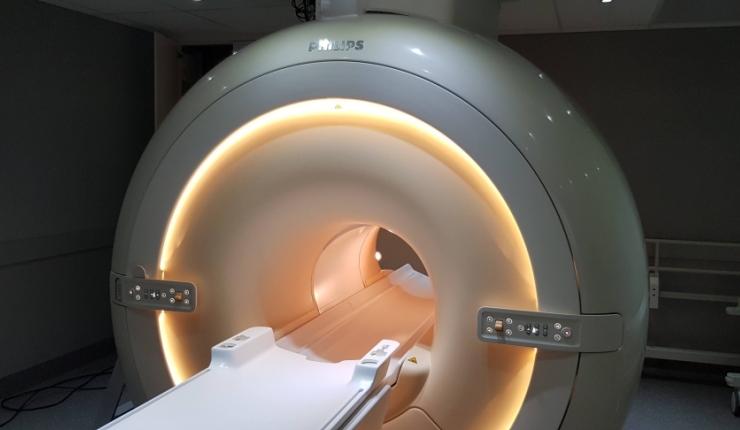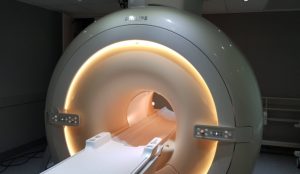
5 Things You May Not Know About MRI scanners
Most people have heard of MRI. Perhaps some even know what it stands for: Magnetic Resonance Imaging.
 And perhaps you know it is used to image the brain, the heart or other parts of the body, and to aid in the diagnosis of a disease or track the effectiveness of treatment.
And perhaps you know it is used to image the brain, the heart or other parts of the body, and to aid in the diagnosis of a disease or track the effectiveness of treatment.
Many research groups at NeuRA, for instance, are using MRI to provide a greater understanding of some of the most debilitating and devastating human diseases such as Parkinson’s disease, Alzheimer’s disease and other types of dementia, mental illness, and chronic immune disorders.
Researchers use the scanner to obtain structural images of patients of healthy controls, for example. Some obtain MR images to complement physiological testing, hoping to identify which parts of the brain are being used in a particular cognitive process, while others may wish to brain connectivity to understand the progression of ageing and disease.
As commonplace as this imaging method is today, MRI and the physics behind it are considered to be a bit of a mystery. With this in mind, here are a few things you may not know about MRI that may help you understand its importance in medical research.
1. How does it work?
Around two-thirds of your body mass comes from water, which contains hydrogen and oxygen atoms. The nuclei of the hydrogen atoms, or protons, act like compass needles in the presence of a magnetic field and they all align in the direction of the magnetic field produced by the MRI scanner.
The protons absorb the energy from radio waves which briefly push them out of alignment. When the protons realign with the magnetic field, they emit energy, which we detect as a signal. Advanced computer software then works to build up an image by determining where the signals were emitted from; regions with more water (more protons) will show up brighter than other regions.
There is a whole bunch of other tricks to provide better resolution and contrast, but that’s the basics in a very, very small nutshell.
2. Is there radiation involved with MRI?
Radiation comes in many familiar forms such as light, radio waves, sound, and x-rays. But when most people ask this type of question, they are referring to the ionizing radiation, or the type that is harmful to human tissue.
Ionizing radiation changes the structure of the tissue and alters the make-up of the atoms. Imaging methods such as X-ray, CT (Computed Tomography) and PET (Positron Emission Tomography) imaging all use ionizing radiation.
MRI does not use ionizing radiation.
The technique relies on the use of electromagnetic energy in the form of magnetic fields and radio waves. These forms of radiation do not alter the chemical properties of the tissue and are completely harmless.
3. The magnetic field is always on
The magnetic field produced by an MRI already on when the patient walks into the MRI room. And herein lies its biggest danger.
The magnetic field produced by the Philips 3 Tesla MRI scanner is approximately 60,000 times greater than the earth’s magnetic field. Small ferromagnetic objects can reach speeds up to 90 kph when pulled towards the scanner and their trajectory can be extremely dangerous, striking anything or anyone in its path.
4. Why the narrow tunnel?
One of the most common MRI concerns is the requirement to lie in a confined tunnel or bore as it is often called.
Large coils within the shell of the MRI scanner are designed to produce the strongest and most uniform field possible at the centre of the bore. The closer the patient is to this central point, the better the images.
So while the tunnel could be wider and more comfortable for the patient, the images it will produce will most likely be of poor quality and of no use in clinical diagnosis.
5. Why is it so noisy?
One of the most commonly asked questions about an MRI scan is: why is it so noisy? It’s so noisy that the patient is often given earplugs and headphones for protection. One could describe the noise as a series of clunking or banging sounds.
The noise is generated by the gradient coils housed within the shell of the MRI scanner. To create an image, the static field (the one that is ‘always on’) needs to be rapidly changed at different points across the bore.
This is achieved by sending rapid pulses of electricity through the gradient coils. It is these short and strong pulses that lead to the vibrations within the coils and the loud clunking noises.
Recent Comments